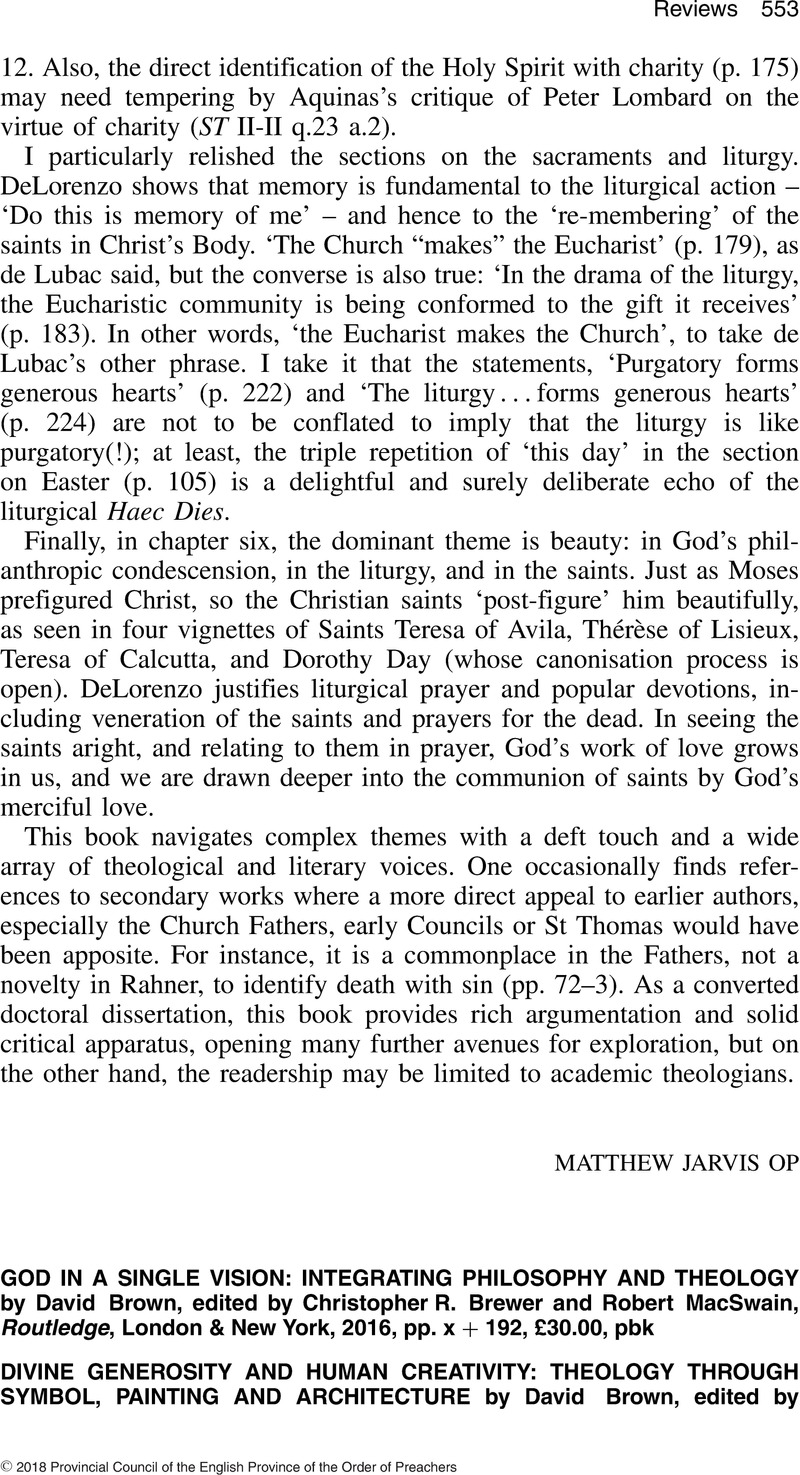No CrossRef data available.
Article contents
God in a Single Vision: Integrating Philosophy and Theology by David Brown, edited by Christopher R. Brewer and Robert MacSwain, Routledge, London & New York, 2016, pp. x + 192, £30.00, pbk - Divine Generosity and Human Creativity: Theology Through Symbol, Painting and Architecture by David Brown, edited by Christopher R. Brewer and Robert MacSwain, Routledge, London & New York, 2016, pp. xv + 208, £30.00, pbk
Review products
God in a Single Vision: Integrating Philosophy and Theology by David Brown, edited by Christopher R. Brewer and Robert MacSwain, Routledge, London & New York, 2016, pp. x + 192, £30.00, pbk
Divine Generosity and Human Creativity: Theology Through Symbol, Painting and Architecture by David Brown, edited by Christopher R. Brewer and Robert MacSwain, Routledge, London & New York, 2016, pp. xv + 208, £30.00, pbk
Published online by Cambridge University Press: 01 January 2024
Abstract
An abstract is not available for this content so a preview has been provided. Please use the Get access link above for information on how to access this content.

- Type
- Reviews
- Information
- Copyright
- Copyright © 2018 Provincial Council of the English Province of the Order of Preachers


